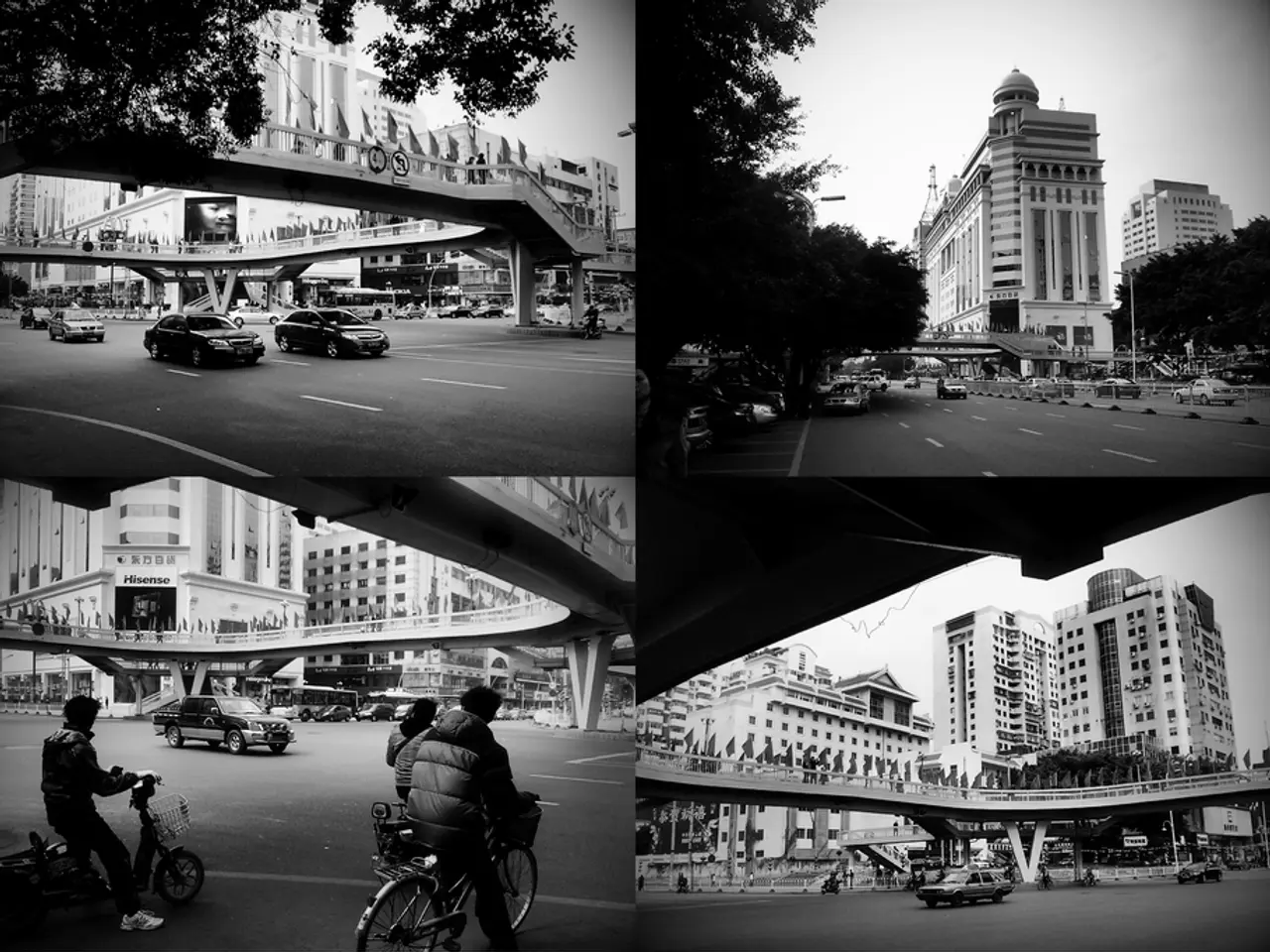Consultations have been held regarding these matters by the Commission:
The largest fair on the Rhine, the Rheinkirmes, is set to take place in Oberkassel, Düsseldorf from 11 to 20 July 2025. With an anticipated attendance of around four million visitors, it's crucial to plan your journey carefully to ensure a smooth and enjoyable experience.
Parking Near the Fairgrounds
Visitors should be aware that parking spaces near the fairgrounds are limited due to the event's large scale and space constraints. It is strongly advised to use public transportation, such as trams, buses, or trains that serve the Oberkassel district, to avoid traffic jams and parking difficulties.
Shuttle Services and Park-and-Ride Facilities
For those arriving from further afield, shuttle services and park-and-ride facilities located outside the immediate area are common for large festivals like this in Düsseldorf. Attendees can park farther away and take shuttle buses or public transit directly to the fairgrounds. Details for 2025 have not been released yet, but past iterations of the fair typically offered such alternatives.
Traffic Bottlenecks and Road Closures
Due to the fair’s size, traffic bottlenecks and road closures are expected around the main event days (July 11–20, 2025). Arriving early or late or using off-peak public transportation is recommended to improve access and experience.
Residential Parking and Access
Residents of Kaiser-Wilhelm-Ring can access the street via the barrier point Kaiser-Wilhelm-Ring/Düsseldorfer Straße from the direction of the Rhine knee bridge. The Oberkassel and Rhine knee bridges will be closed to traffic for the drone show on Saturday (12.7.) and the fireworks on Friday (18.7.).
Resident parking permits for the affected parking zones NK, OK, Z, and SC are also valid as a passage permit. Vehicle owners who live in the closed areas and whose vehicles are registered to that address, even those with foreign license plates, will receive a passage permit that allows them to pass through the barriers.
Bicycle Parking
Bicycle parking is available north of the Oberkassel Bridge and at Kaiser-Wilhelm-Ring. However, bicycle parking is prohibited at the bridge landings and along the entire fairground fence. Bicycles will also be towed away if parked in prohibited areas.
Special Parking for Disabled Persons
A special parking lot for disabled persons with around 30 parking spaces will be set up at the Rhine knee bridge.
Towing of Illegally Parked Vehicles
To support the traffic concept, the municipal traffic monitoring will be reinforced everywhere with deployment teams to control illegally parked vehicles and initiate fine procedures and/or towing.
Motorcycles and Pedestrians
Motorcycles can still be parked north of the Rhine knee bridge as in previous years. Walking or cycling can be viable for residents or those staying nearby in Oberkassel, as the fair spans a very large outdoor area but nearby parking is scarce.
In summary, visitors should avoid attempting to drive and park near the Rheinkirmes due to severe restrictions and lack of parking, and instead rely on public transportation, shuttle buses, park-and-ride options, or active mobility modes like walking or cycling to access the event safely and conveniently.
A home-and-garden lifestyle tip for visiting the Rheinkirmes fair in Düsseldorf is to consider alternative modes of transportation, such as public transportation, shuttle services, or park-and-ride facilities, to avoid traffic jams and parking difficulties due to the fair's large scale.
In planning a travel itinerary for the Rheinkirmes, consider factoring in traffic bottlenecks and road closures anticipated during the event's main days and arriving early or late, or using off-peak public transportation to improve access and overall experience.




